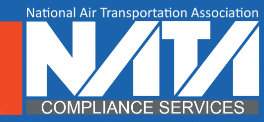
On Halloween, the Virgin Galactic SpaceShip Two broke apart over the Mojave Desert, killing co-pilot Michael Alsbury. Alsbury, along with pilot Peter Siebold, who survived the crash, were performing a test flight when something went wrong. While the exact cause of the crash is being investigated by the National Transportation Safety Board (NTSB), early findings reveal some sobering lessons that the air translportation indusry can learn from.
Even Experienced Crew Make Mistakes
Humans are fallible, even those who have undergone the best training and have the most experience. Alsbury had 15 years of flight experience, and the Halloween flight was his ninth trip in SpaceShipTwo; Siebold got his pilot’s license when he was 12. Just a week after the crash, NTSB revealed that the 39 year old co-pilot changed the spacecraft’s aerodynamic controls prematurely, causing the tail to rise and create drag, essentially hitting the brakes early. NTSB Chairman, Christopher Hart, cautioned this “feathering” error should not have caused the crash on its own, and is only one of several possibilities the organization was exploring as the cause of the crash.
Despite the ultimate reason or reasons that brought SpaceShipTwo to the ground, aircraft operators know even the best will make mistakes. So automating operations as much as possible, creating protocols that require more than one crewmember to sign off on important decisions, and even creating and constantly improving checklists can help to reduce human error regardless of the job being performed.
Virgin Galactic faces similar business obligations as aircraft operators, and in this way, this spaceflight company resembles aircraft operators more than it resembles NASA. Business forces pressure companies to constantly improve operations in order to drive profits but, like the airline industry, Virgin Galactic must balance this pressure with safety concerns.
So when the company decided to replace its unconventional fuel source, a synthetic rubber called MTPB, with an experimental nylon fuel called polyamide, in order to improve production times of aircraft, it put the safety of its pilots at risk since MTPB is known to be more stable. While engineers did test the polyamide engine on the ground, the October 31 test flight was the first time the fast burning fuel was used in real conditions.
Safety Personnel Should Be Taken Seriously
In the aftermath of the crash, it was revealed that the safety chief of the engineering firm that built SpaceShipTwo, Scaled Composites, resigned last year. The company did not replace him, which is surprising, given the experimental nature of the program and the new fuel program being developed and tested. While not always required by regulators, safety personnel should be considered a serious and important component of any transportation team. These human resources might support compliance but will also help mitigate any potential risk as well as work to keep passengers and property safe and revenues stable.
Virgin Galactic, as a private company, has no obligation to share any information, yet has been quite forthcoming about challenges and problems of the flight since the crash. In doing so, Virgin may see public support for its program increase as a result. “When something terrible happens, many are reminded that it is something important that the country should continue,” says Valarie Neil, space shuttle curator at the Smithsonian National Air & Space Museum. This support can translate to financial gain.
Regardless of the cause, every tragedy has lessons to be learned so similar accidents are prevented and lives are saved.




